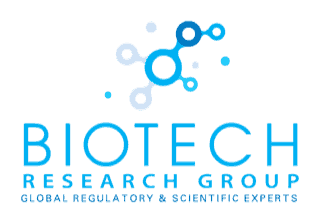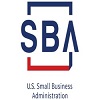Framework of a Validation Report
12/25/2018
Category: Good Industry Practices
The U.S. FDA is clear that medical devices and/or significant processes must be validated to ensure the standard of quality is being met. Compliance to U.S. FDA regulations is critical to the operations of any FDA Registered Establishment. Process validations and verifications (V&V) in biologics and medical devices are used to comply with CFR 21 Part 1271.30 and CFR 21 Part 820.75, respectively. Correct use of validations and verifications allows manufacturers to achieve repeatable quality outputs in processes and/or medical devices. Disinfection, sterilization, production, manipulation of biologics, and equipment are a few reasons companies choose to validate their processes or outsource the work to a biologics consulting group.
A Biologics consulting group would advise to have an efficient validation plan to ensure high risk processes for contamination are validated properly and these risks are avoided. Validation and verification are two individual tools used together to properly ensure standardization of a process or medical device. V&V is often used in quality assurance and product development cycles. The purpose of a validation report is to provide documentary evidence that a process is reproducible, reliable and remains in a state of control. This blog will focus on writing a simple validation and verification report that could be used for biologics, drugs, and medical devices. An effective V&V report consist of several components and will be discussed in this article.
Prior to any validation, a team should be selected to perform the validation. The team members should consist of those who are or will be closely related to the process, if possible. A quality assurance team member is helpful in that they are knowledgeable in federal regulations and their organization’s internal standard operating procedures. A member from the management team will be vital to keep on budget for the validation project and to make key decisions in case changes are needed.
Biological processes tend to have more variables. It may be beneficial to have a Biologics consulting group as part of the team in order to streamline the project. Once the team is selected, the team should move forward with a concise plan of execution for the validation project. Each person of the validation team should be listed in the report with their title, department, experience and qualifications. The individual that was designated as the team leader should be marked as such and listed first.
The section that describes the validation team should appear after the introduction section. A validation report should be titled and start with an introduction section. The introduction section should include a purpose, scope, definitions, references, and compliance. The purpose of the validation should be defined and it should include the end-user in mind. The purpose should be clearly stated as it will be the guiding principle for the team. User requirements are needed for medical devices and should be part of the purpose. The scope should be an outline of the validation. The definitions should include any acronyms or medical words that may need to be defined. The validation team should compile any information related to the validation such as standard operating procedures (SOP), literature searches, FDA guidances, materials of other industry-regulated bodies, and company forms. This documentation should be listed under references.
Some SOPs may include disinfection, manufacturing procedures, equipment operations and so on. The team will need to confirm that all internal and external regulation criterion are being met. All code federal regulations, ISO standards, and other local regulations should be identified and verified the process is in compliance.
Also Read: The Self-Care Solution: Rx-to-OTC Switch
The validation report should include the validation protocol that the team plans to use. A flow chart of the process will suffice. This will help the team navigate through the validation process and demonstrate how the validation process was followed. A section dedicated to product and equipment qualifications should be added to the report. Any equipment used in the process should be qualified that it was installed, operated and calibrated accordingly. Specifications and expirations of any materials or products should be thoroughly reviewed, including vendor audits. Sterile products should have certificate of analysis included in the report. The facility should be qualified as well. The facility must meet the minimal standards needed for the validated process, including but not limited to space, air quality, electric and plumbing. Sampling and testing section should include a description of how the product will be tested to meet the quality standards needed for validation. Specifications such as measurability, tolerances, contaminant levels, temperatures, and other design factors provide the acceptance criteria. Raw test data and results should be included in this section.
A validation team should include a section to identify any limitations of the validated process. Included in the limitations area, the team should identify any hazards during all stages of the validation and address how each one was mitigated. Risk assessment should be performed continuously. Once hazards are outlined, action should be taken to address the issues. The validation report should have a conclusion or an evaluation section which should compare the acceptance criteria to the test results. The purpose of the conclusion section is to interpret the results and the success of the validation process. It should state when a revalidation will be needed such as supply changes, time lapse, and process improvements. This section should show how often verification is performed, however to be effective, it should be included in ongoing quality control activities. Verification signifies that the requirements are continuously met and are proven by tests, inspections, observations, record reviews and analysis, if needed. Verification can detect process failures by evaluating the data collected from the process. Process failures can occur due to process drifts, material changes, personnel changes and so on.
FDA requires that validation and verification becomes a part of the product and process life cycles continually assuring the process is controlled. The validation report should be finalized with an approval section. The validation team should sign off that the whole process or medical device meets the required standards. In addition, the validation team can approve each section of the report. The validation approval date should be applied to the report. The date is significant in that distribution of a product can only occur after such date.
There are many benefits to have validated processes. Customer satisfaction due to consistent product quality and product reliability will help secure future business. Validated processes will help with validating other related products and expedite failure investigations. It will help with process improvement and employee awareness. Successful regulatory inspections are another key benefit. Validation is not meant to be burdensome or just a means to comply with cGxP regulations, rather it should be viewed as a tool to improve a process which will save time and money. Since validated processes assures control in a process and the end-product meets the desired functionality, the result will be consumer confidence and safety.
In terms of a medical device, a properly performed validation will ensure that the end user needs are met and that it consistently provides the intended medical objective in a dynamic environment. Validation & verification plans should be enacted prior to distribution of a final product. Failure to do so can result in the FDA issuing form 483 for failure to comply with code federal regulations. A company-wide application of thorough validated processes with well-written validation reports will result in better repeatability, fewer mistakes, faster time to distribute, improved competitiveness, and lower production costs.
Author Information
Christina Sanchez Miller, MPH has over 20 years of management, biologics, quality assurance and research experience in the medical field. She is a published author in scientific books, papers and has presented at several international conferences. Christina has developed medical applications in the biologics field. Her experience includes operations and consulting in FDA Adverse Event Reporting, FDA Product Deviation Reporting, FDA 483’s, cGTP’s, infection control, certified ISO Class 5, 7, 8 development and maintenance, QIC and auditing.
BRG is a global scientific & regulatory consulting firm with extensive experience in the strategic development of drug products, biologics, medical devices, combination products and in FDA regulatory affairs. As such, BRG is a biologics consulting group focusing on Quality Management Systems and tissue-based products. The opinions and statements in this blog are those of the authors and do not necessarily reflect those of BRG. This blog is based on personal experience and reviews of information publicly available or identified in other database searches.


